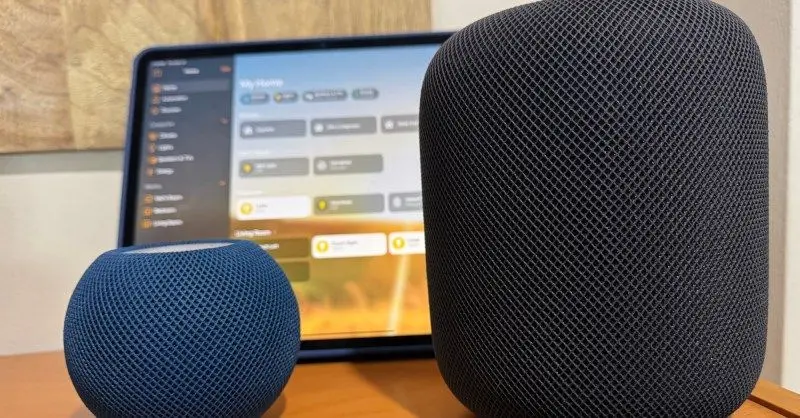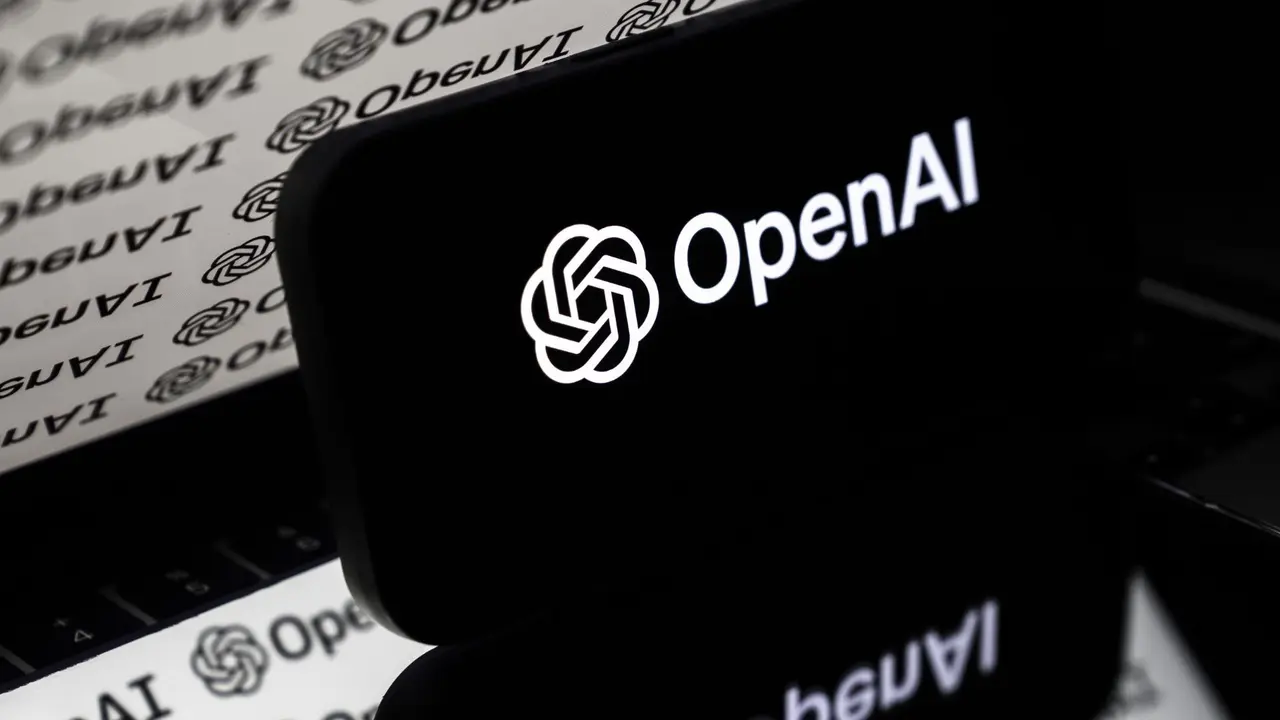Apple's Smart Home Ambitions: New Devices Set to Revolutionize Connected Living
2 Sources
2 Sources
[1]
Apple's first ever smart display rumored alongside quirky 'tabletop robot'
A 7-inch hub could star in a new smart home trio alongside security cams and a robot-with-screen What's happened? It appears Apple is, finally, building a proper smart screen for the home. The centerpiece is a roughly 7-inch display that runs your place, with a FaceTime camera and identity-aware software that shifts to whoever walks up. The launch has apparently moved to spring 2026 after Apple delayed its Apple Intelligence AI it wants to ship alongside it. Mark Gurman reported in Bloomberg that there are two versions are in play: a tabletop screen with a speaker base, and a wall-mounted option - the latter of which would go head-to-head with Amazon's Echo Show 15. Apple originally eyed March 2025, then other internal windows, before resetting the timeline to spring 2026. There's also indoor security cams tipped to be produced in Vietnam and slated for release at the end of next year. Meanwhile, Gurman claims a more advanced tabletop robot with a roughly 9-inch display on a motorized arm, and a more conversational Siri, will arrive in 2027. Why this matters: Apple has never shipped a dedicated home controller, or suite of smart home devices outside of the HomePod and HomePod Mini. This lineup, a screen first, then security cameras, and later a tabletop robot, puts it directly against Amazon and Google, and ties Apple's hardware to a broader AI Siri upgrade. A built-in camera would bring FaceTime and quick check-ins to a shared screen. For a wider view of the category, check our best smart displays you can buy now. Recommended Videos Why should I care? If you live in Apple's world, this fills the blank spot on your counter or wall. It centralizes HomeKit devices, FaceTime, music, and a more capable Siri so you reach for your phone less. New Siri, planned for March next year, is designed to pull web answers and trigger actions inside apps, which makes a fixed home display more useful. For Apple households, it links services and accessories in one glanceable panel. We'll have to wait and see how these new devices compare to the best smart home devices today. Okay, so what's next? The report says Apple will ship the screen first, the cameras could follow late next year, and the tabletop robot the year after. To keep costs and risk in check, Apple is leaning on LCD panels and Vietnam production. Pricing conversations for the screen mention $350, which sits above many Echo and Nest rivals, but nothing is confirmed. Operations teams are still pushing to meet the target price for the hub. Hardware has been ready for months but the release is timed to the Siri upgrade. If successful, an Apple smart home may be just a couple of years away.
[2]
Apple Inc. Plans to Introduce New Products in 2026
Apple Inc. announced The hardware for Apple?s new home hub, a roughly seven-inch square-shaped display, was completed nearly a year ago. The product was originally slated for a March 2025 debut, timed to coincide with a revamped version of the Siri voice assistant. But the underlying artificial intelligence software was postponed, prompting Apple to delay the hardware as well. After scrapping launch targets in June and October, Apple is now aiming to introduce the device in spring 2026. The new Siri, currently planned for this coming March, will allow users to get answers from the web, as they would using ChatGPT or another chatbot, and have more precise control over actions inside apps. That should make it useful for a device aimed at controlling appliances, music and communications within a home. There are two versions of the home hub. One, code-named J490, has the display mounted on a speaker base. It resembles a screen-equipped version of the HomePod mini. The second, dubbed J491, is designed to be hung on a wall. Development of the wall-mounted version wrapped up after work on the standard tabletop model. Both devices will include a FaceTime camera and a software interface that dynamically adjusts depending on who is using it. The software will recognise users when they approach the display, similar to the adaptive behaviour of Amazon.com?s latest Echo displays. Development began in 2023, Bloomberg News reported at the time. Apple has targeted a price of around USD 350 for the new device. That would be about USD 50 more than the full-sized HomePod, and still far above competing products from Amazon and Alphabet?s Google. Apple?s operations teams have been exploring ways to reduce manufacturing costs in hopes of bringing the price down, either for the initial release or subsequent generations, the sources familiar with the matter said. The indoor security camera, code-named J450, is planned for release as soon as the end of next year. Apple is also planning production for the tabletop robot, which resembles the home hub display but sits on a motorised arm capable of moving the screen around a user?s workspace or kitchen. The motor system has had engineering challenges, and the company has sought to find compelling AI uses for the device. That?s pushed out the current timeline to roughly two years from now. Apple is targeting a price in the several-hundred-dollar range, reflecting the high cost of the robotic components and associated development costs. The initiative traces its roots to Apple?s now-shelved self-driving car project, which included a team focused on robotics. The company is also working on a robotic arm for manufacturing and has explored mobile robots similar to the Amazon Astro. Beyond its motion capabilities and an upgraded, more conversational version of Siri, the tabletop robot will feature a roughly nine-inch display, about the size of an iPad. That will be bigger than the home hub?s screen. Both devices will use low-cost LCD panels supplied by Tianma Microelectronics, rather than Apple?s latest display technology.
Share
Share
Copy Link
Apple plans to introduce a range of smart home devices, including a 7-inch display hub, security cameras, and a tabletop robot, marking its significant entry into the smart home market. The launch timeline extends from 2025 to 2027, with the first devices expected in spring 2026.

Apple's Smart Home Revolution
Apple is gearing up to make a significant splash in the smart home market with a trio of new devices set to launch between 2025 and 2027. The tech giant's ambitious plans include a smart display hub, security cameras, and a tabletop robot, all designed to create a comprehensive Apple-centric smart home ecosystem
1
2
.The Smart Display Hub: Apple's Home Control Center
At the heart of Apple's smart home strategy is a 7-inch display hub, codenamed J490 and J491. This device, which has been in development since 2023, comes in two variants: a tabletop model with a speaker base and a wall-mounted version
1
2
. Key features include:- FaceTime camera for video calls
- Identity-aware software that adjusts to different users
- Integration with HomeKit devices, music, and a more capable Siri
- Target price of around $350, positioning it as a premium offering
The hub's hardware was reportedly completed nearly a year ago, but its launch has been pushed to spring 2026 to align with the release of Apple's upgraded AI assistant
2
.Enhanced Siri and AI Integration
A crucial component of Apple's smart home strategy is the revamped Siri, scheduled for release in March 2025. This new version will offer:
- Web-based answers similar to ChatGPT
- More precise control over in-app actions
- Improved conversational abilities, especially for the tabletop robot
These AI enhancements are designed to make the smart home devices more useful and intuitive for users
1
2
.Security Cameras and Tabletop Robot
Complementing the smart display hub, Apple has two more devices in the pipeline:
-
Indoor security cameras (codenamed J450): Planned for release as early as late 2025, these will be produced in Vietnam
1
2
. -
Tabletop robot: A more advanced device featuring a 9-inch display on a motorized arm, scheduled for 2027. This robot aims to offer a more interactive and mobile smart home experience
1
2
.
Related Stories
Manufacturing and Pricing Strategy
To manage costs and risks, Apple is adopting several strategies:
- Using LCD panels from Tianma Microelectronics instead of more advanced display technologies
- Exploring production in Vietnam for some devices
- Targeting a price range of several hundred dollars for the tabletop robot, reflecting its advanced features
2
Market Impact and Competition
Apple's entry into the smart home market puts it in direct competition with established players like Amazon and Google. The company's focus on premium pricing and integration with its existing ecosystem could differentiate its offerings in a crowded market
1
.As Apple prepares to fill the "blank spot on your counter or wall," the success of these devices could redefine the smart home landscape for Apple users and potentially reshape the broader market in the coming years
1
.References
Summarized by
Navi
[2]
Related Stories
Recent Highlights
1
AI Chatbots Sway Voters More Effectively Than Traditional Political Ads, New Studies Reveal
Science and Research

2
Google AI glasses set to launch in 2026 with Gemini and Android XR across multiple partners
Technology

3
EU Launches Antitrust Probe Into Google's AI Training Practices and Content Usage
Policy and Regulation







